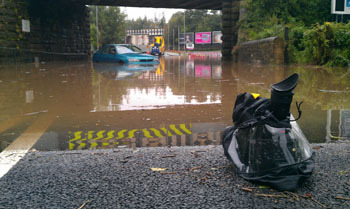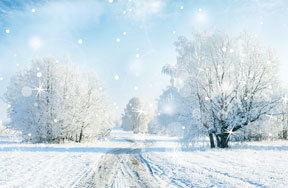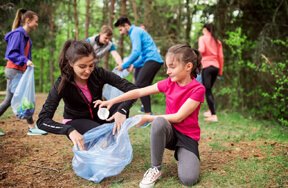Every year millions of people around the world have their lives affected by floods. Flooding can come from both rivers and the sea and no region is competely safe from flooding. In the last ten years, flooding has cost the US $2.9 billion per year! A flood is simply defined as an overflow of water that submerges land that is normally dry. Depending on the severity of the flood, this can cause a lot of devastation as floods are often the reality of natural disasters like hurricanes or tornadoes. Learn all about the most widespread natural disaster apart from wildfires!
 Be prepared for any natural disaster by planning aheadCourtesy of Flickr
Be prepared for any natural disaster by planning aheadCourtesy of Flickr
What Causes Floods?
Flooding can be caused by a number of things - snow and frozen grounds melting, heavy rainfall, flash floods and mudflows. The most common cause of flooding happens when a river bursts its banks and the water spills onto the floodplain and is often called a flash flood. It can also be caused by heavy rainfall - the faster the rainwater reaches the river channel, the more likely it is to flood. The landscape around the river affects how likely it is to flood. A steep valley, the amount of vegetation and rock-type can all affect how the likelihood of flooding.
 It only takes two feet of water to sweep away a carCourtesy of Flickr
It only takes two feet of water to sweep away a carCourtesy of Flickr
Flood Facts
- A car can be swept away in as little as two feet of water.
- Flash floods can bring walls of water from 10-20 feet high.
- 90% of all U.S. natural disasters declared by the President involve some sort of flooding.
- The main cause of flooding in the Eastern U.S is due to hurricanes and storms. On the West Coast, it's due to snowmelt and rainstorms.
- In 1889, a dam break upstream from Johnston, Pennsylvania released a 30-40 foot wall of water that caused 2200 fatalities within minutes. Scary!
 A town's flooded streetsCourtesy of Flickr
A town's flooded streetsCourtesy of Flickr
How to Prepare
It's important to stock up on items for a first aid kit, have plenty of non-perishable food on hand (like canned tuna and chilli), 3 gallons of water per person for 3 days, batteries, a flashlight and a battery-operated radio to listen to weather updates. Prepare an emergency kit with emergency numbers and any essential hygiene items like wipes, medication and warm clothing. If you have a cat, make sure the carrier is somewhere easily accessible. Go to the highest ground of floor possible but if you come into contact with floodwater, make sure to wash your skin with soap and disinfectant as the flood water may be contaminated with sewage.
Have your say
How much do you know about natural disasters? Share your knowledge in the comments below!

































